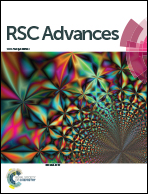The breakdown of reticent biomass to soluble components and their conversion to levulinic acid as a fuel precursor†
Abstract
A biphasic system consisting of THF and water was studied to achieve the integrated conversion of cellulose and hemicellulose in lignocellulosic biomass to levulinic acid. As compared to previous studies using GVL as solvent, the utilization of a lower boiling point solvent, THF, also achieves the simultaneous hydrolysis of C6 and C5 carbohydrates in lignocellulosic biomass, and the results of simultaneous hydrolysis are comparable. Furthermore, it offers an alternative operation procedure after the hydrolysis. A distillation process is not only used to achieve the effective separation of the solid residue from the desired products, but it also helps in the complete isolation of furfural and formic acid from levulinic acid. Consequently, the utilization of by-product formic acid in the hydrogenation of furfural to furfuryl alcohol is explored, and the process is achieved with both model substrates and the feed from the lignocellulosic biomass feedstock. The hydrolysis of furfuryl alcohol gave C5 carbohydrate-derived levulinic acid. We finally explored the integrated conversion with five biomass raw materials, and the total yield of levulinic acid was quite obviously promoted by the additional conversion of pentose.


 Please wait while we load your content...
Please wait while we load your content...